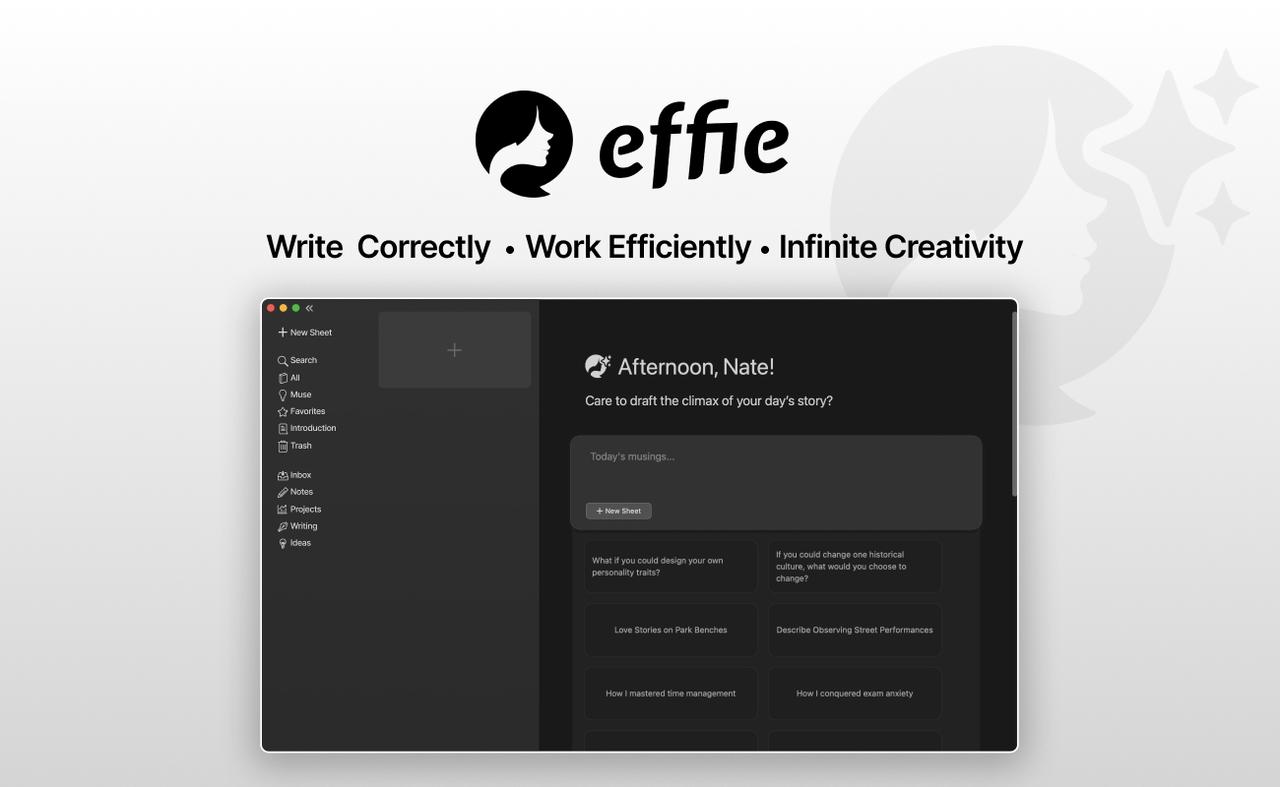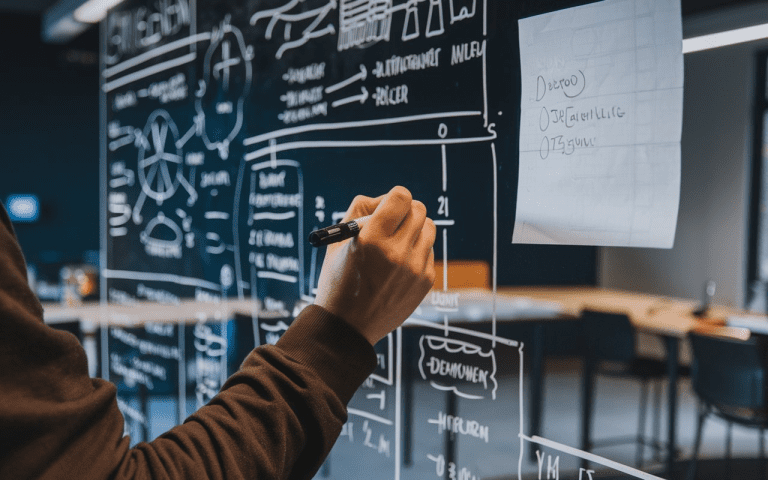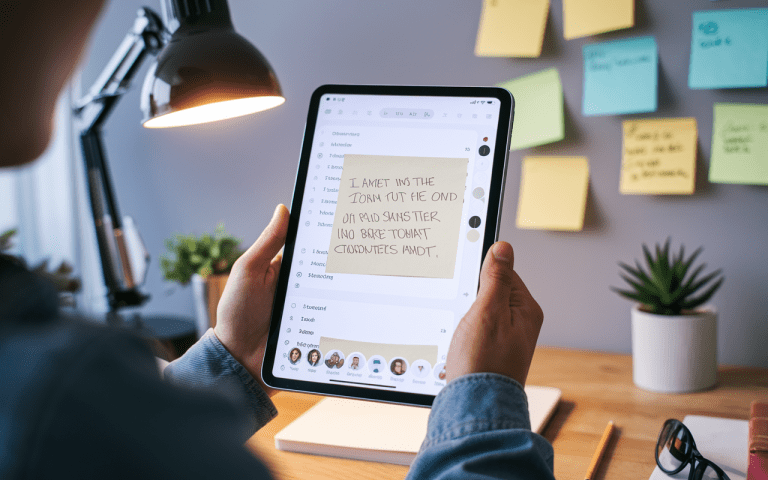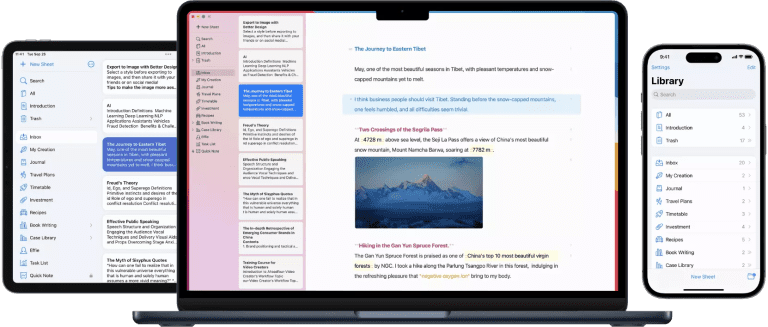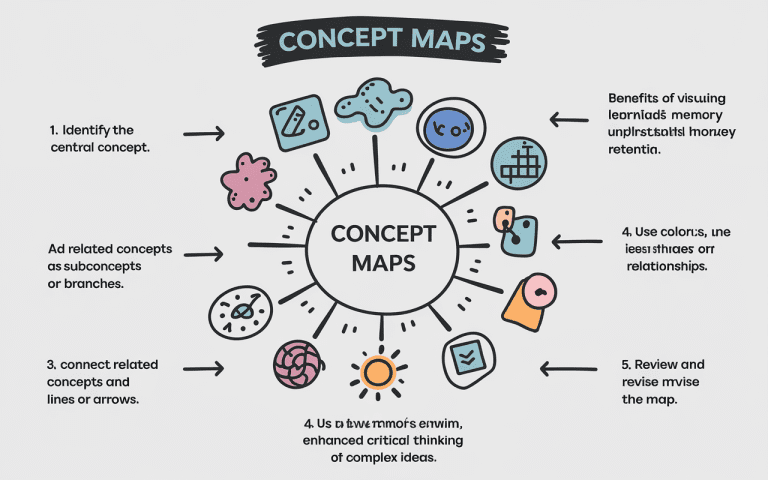Mind Map: A Note Taking System Involves Visual Organization
Imagine a busy conference room. Marketing pros are brainstorming their next big campaign. One team member is at the whiteboard, using colorful markers. They start to draw a mind map, showing how ideas connect and grow.This is mind mapping in action. It’s a way for visual thinkers to handle the flood of information.It lets them see the big picture and understand complex ideas better.
For those who think better with pictures, old-school note-taking feels too strict. It blocks their creativity and makes it hard to grasp the whole idea. But mind mapping opens up new possibilities.
It turns ideas into a web of connections. This way, you can dive deep into topics, spot patterns, and find new solutions.It’s a powerful tool for anyone who thinks visually.
Key Takeaways
- Mind mapping helps visual thinkers organize and understand information more effectively.
- This note-taking technique allows for a non-linear, hierarchical representation of ideas and concepts.
- Mind maps can enhance creative thinking, memory enhancement, and associative thinking.
- Both hand-drawn and computer-generated mind maps offer unique benefits and customization options.
- Mind mapping can revolutionize how teams collaborate and bring ideas to life.
What is a Mind Map?
Note-taking has changed a lot since the old days of pen and paper. Now, mind mapping is all the rage. It’s a way to roganize thoughts and ideas with text, images, and lines.This method helps people who think visually to understand information better.
Effie’s built-in mind map feature allows users to visualize their thoughts in a structured way and easily switch between lists and mind maps, making idea organization smoother.
Unlocking the Power of Visual Brainstorming
Mind mapping uses the brain’s love for visuals to help remember things. It’s a mind mapping technique that makes complex ideas easier to grasp. This visual note-taking method boosts understanding and sparks creativity.
It begins with a central idea, then branches out with more details. This way, you can see how things connect and understand the big picture. It’s all about exploring and seeing the whole picture.
Effie’s AI assistant can further enhance this process by helping you organize your mind map and offering suggestions to expand or refine your ideas.
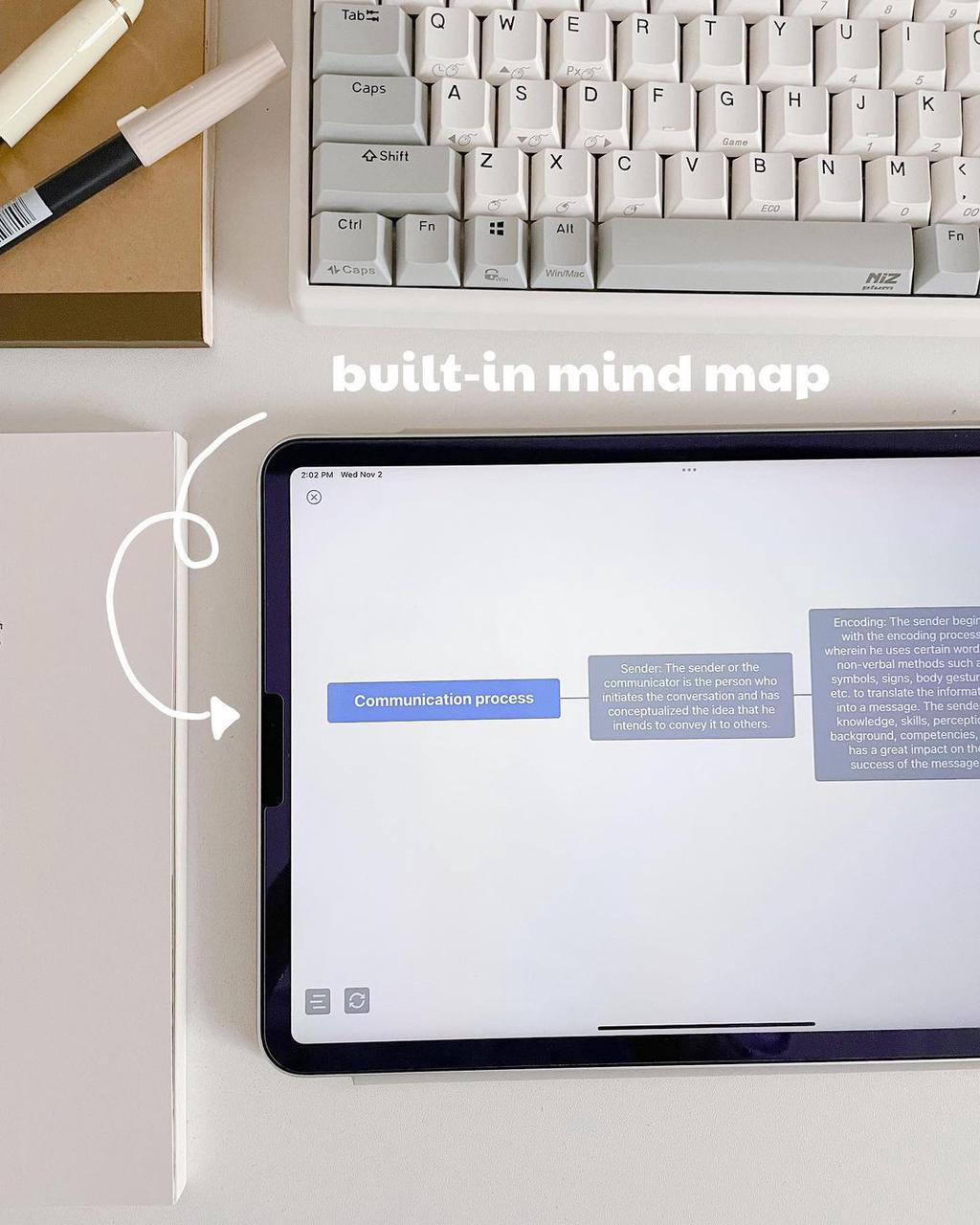
Benefits of Using Mind Maps
Mind maps are a powerful tool for visual thinkers and learners. They help boost retention, productivity, creativity, idea organization, information mapping and problem-solving.Studies show mind mapping can increase information retention by 10-15%. The visual, non-linear nature of mind maps helps the brain better remember key concepts.
Effie’s AI review and outline tools can complement this by assisting users in structuring their thoughts in real-time.
Mind maps are also great for teamwork. They allow for real-time collaboration and sharing in teams. This helps in brainstorming, idea generation, and analyzing information. It makes decision-making more effective.
Another impressive benefit is the improvement in memory and recall. Researchers found a 32% improvement in memory with mind maps. The combination of text, images, and spatial relationships helps the brain remember better.
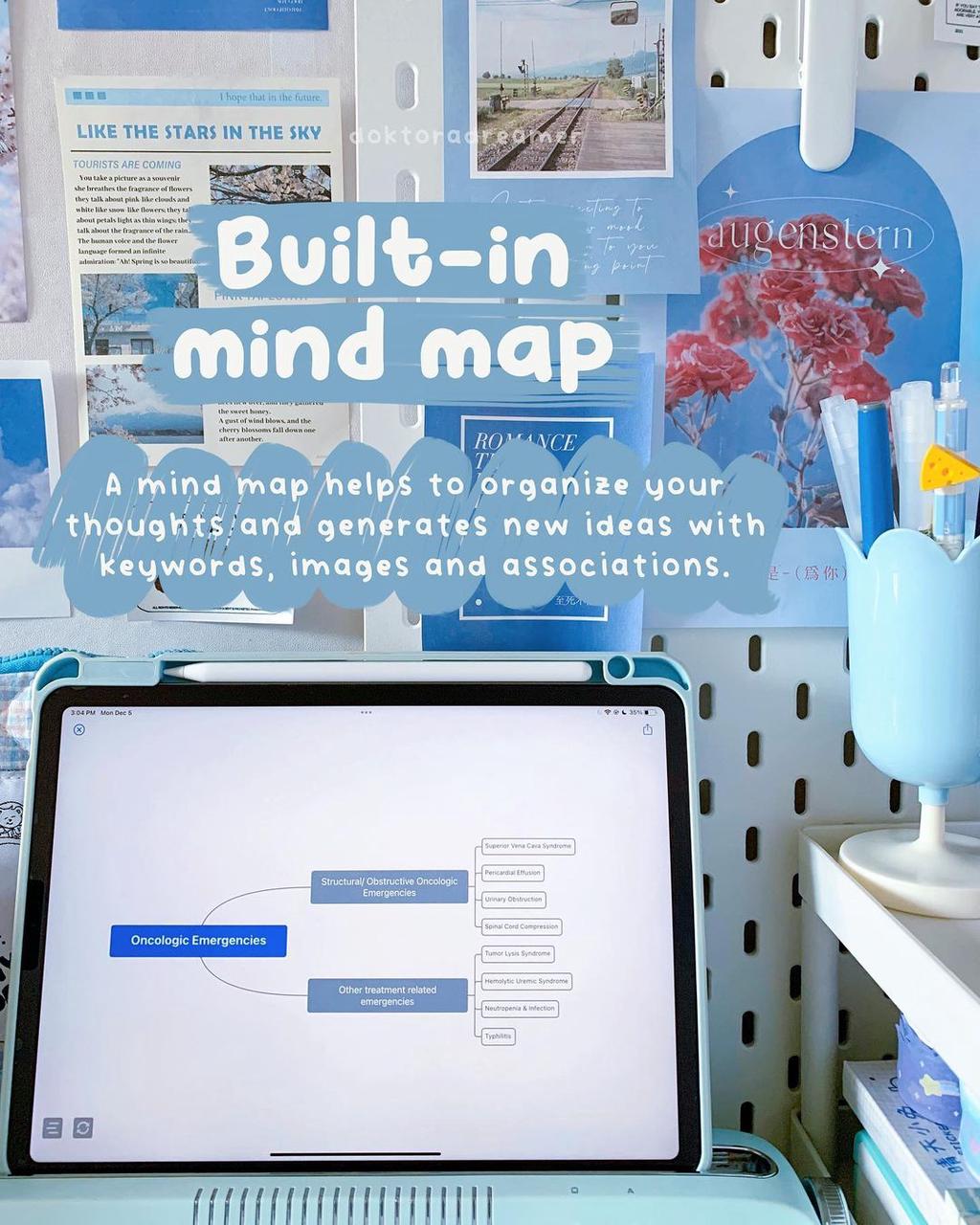
Mind mapping also boosts creativity and lateral thinking. It helps users connect different ideas, leading to new perspectives and innovative solutions. This is why millions of professionals and students worldwide use mind maps.
Looking to boost productivity, improve memory, or find new creative ways? Mind maps offer clear advantages. By using this powerful tool, you can reach your full potential in work, studies, and problem-solving.
The Mind Mapping Process
The mind mapping process has a few key steps:
- Start with a central topic or subject you want to explore.
- Think of related ideas, subtopics, and concepts that connect to the main theme.
- Organize these elements in a web-like structure, with the main topic at the center.
- Use colors, shapes, and symbols to make different categories stand out.
- Keep adding, refining, and reorganizing the mind map as you learn more.
This process helps you engage with the material. It lets you see connections and understand the subject better.
Effie’s built-in tools make it easier to convert these mind maps into well-organized outlines, ready for further refinement.
Mind Mapping Software and Tools
In today’s digital world, mind mapping has moved beyond just pen and paper. Now, we have mind mapping software and apps with lots of features. These digital tools make it easier to share and organize ideas.
For instance, Effie’s mind map feature allows users to create mind maps, switch seamlessly between different modes of organization, and even sync their work across devices. This ensures that your brainstorming sessions are never confined to a single platform.
Mind maps made with software or apps have big benefits over old-school methods. They help with planning by showing goals, tasks, and resources clearly. They also make learning more fun and effective.
FAQ
What is a mind map?
Mind mapping is a way to take notes visually. It uses text, images, and lines to organize ideas. This method helps people who think better with pictures to understand information better.
What are the benefits of using mind maps?
Mind maps help you grasp a concept by looking at it from different sides. They show how ideas are connected, which is key to learning. Plus, they make you remember information better by making you create the map from memory.
How do you create a mind map?
To make a mind map, start with a central idea. Then, add related ideas around it, using lines or arrows. You can draw it on paper, a whiteboard, or use digital tools.
What mind mapping software and tools are available?
Tools like Miro Board or Mural help keep your ideas organized. They let you be creative and innovative. These apps make it easy to move items around without limits.
What are some effective mind mapping techniques?
Good mind mapping uses colors, shapes, and images to show different ideas. Adding hierarchies and connections makes the map clearer and more structured.
How can mind maps be used in education?
Mind maps are great for students because they promote active learning. They help students see how ideas are connected, which is hard to do with just notes.
What are some limitations of mind maps?
Mind maps have some downsides. You can’t write too much text or add multimedia in small notes. Also, you can’t easily link different pieces of information together.
Source Links
How to Use the Mind Map Note-Taking Method | ClickUp – https://clickup.com/blog/mind-map-note-taking/
What is a Mind Map & How to Effectively Do It – https://www.atlassian.com/work-management/project-management/mind-mapping
Mind map – https://en.wikipedia.org/wiki/Mind_map
Note Taking – https://www.maryvillecollege.edu/academics/resources/success-center/toolkit/note-taking/
What Is Mind Mapping, Top Uses & More About The Ayoa App – https://www.ayoa.com/mind-mapping/
What is Mind Mapping? What Are Its Uses? | Mindmaps.com – https://www.mindmaps.com/what-is-mind-mapping/
5 Best Note-Taking Methods for You! – https://www.letsdive.io/blog/5-best-note-taking-methods-for-you
Subject Guides: Note-taking: a Practical Guide: Mind mapping – https://subjectguides.york.ac.uk/note-taking/mind-map

